The top 10 fiscal revenue in China of 2020:
1.Shanghai
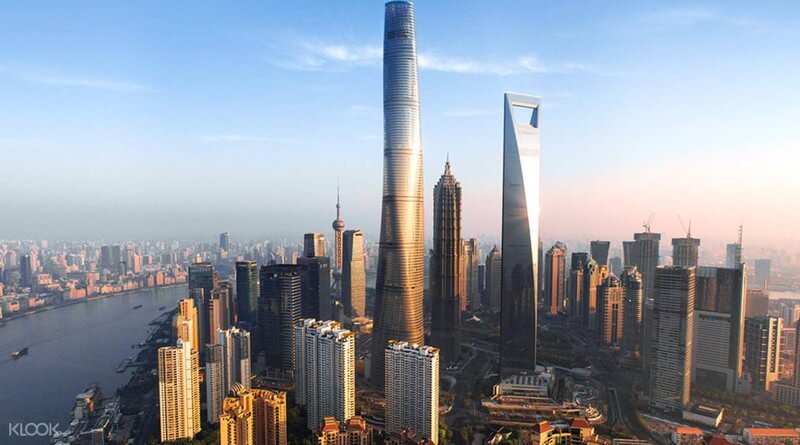
Shanghai, abbreviated as “沪” or “申”, is a provincial-level administrative region, municipality directly under the Central Government, a national central city, a megacity of the People’s Republic of China, China’s international economic, financial, trade, shipping, technological innovation center, and a national logistics hub. The city has 16 districts with a total area of 6340.5 square kilometers. In 2019, the permanent population was 24,281,400, the registered permanent population was 14.504,300, and the foreign permanent population was 9.777.1 million.
Shanghai is located in the Yangtze River Delta, in the east of China, the mouth of the Yangtze River and the East China Sea to the east. It borders Jiangsu and Zhejiang provinces in the north and west, and is bounded by 120°52′-122°12′ east longitude and 30°40 north latitude. Between’-31°53′. During the Warring States Period, Shanghai was the title of Emperor Chunshen, so it was also called Shen. In the Jin Dynasty, because the fishermen created the fishing tool “Hu”, the river flowing into the sea was called “Du”. Therefore, the area in the lower Songjiang River was called “Hudu” and later changed to “Hu”, so Shanghai was referred to as “Hu”.
In 2019, Shanghai’s GDP was 3,815.532 billion yuan, an increase of 6% over the previous year at comparable prices. On December 15, 2019, it was ranked among the top 10 Chinese city brands of the Chinese Academy of Social Sciences.
2.Beijing
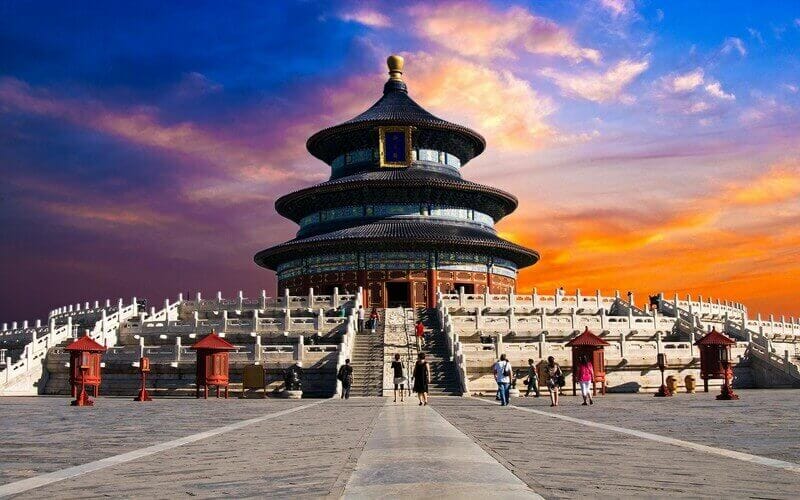
Beijing, abbreviated as “京”, was formerly known as Yanjing and Peiping. It is the capital, municipality, national central city, and megacity of the People’s Republic of China. It is the political center, cultural center, international exchange center, and technological innovation center of China approved by the State Council. As of 2018, the city has 16 districts with a total area of 16410.54 square kilometers. At the end of 2019, the permanent population was 21.536 million, the urban population was 18.65 million, the urbanization rate was 86.6%, and the permanent resident population reached 7.943 million.
Beijing is located in the northern part of China and the northern part of the North China Plain, adjacent to Tianjin in the east, and adjacent to Hebei. Its central location is 116°20′ east longitude and 39°56′ north latitude. It is a world-famous ancient capital and a modern international city, as well as the Central Committee of the Communist Party of China. The office of the Central People’s Government of the People’s Republic of China and the Standing Committee of the National People’s Congress.
The terrain of Beijing is high in the northwest and low in the southeast. The west, north and northeast are surrounded by mountains on three sides, and the southeast is a plain sloping gently towards the Bohai Sea. The main rivers that flow through the territory are: Yongding River, Chaobai River, Beiyun River, Juma River, etc., mostly originating from the mountains in the northwest, passing through high mountains, winding through the plains to the southeast, and finally into the Bohai Sea. The climate of Beijing is a warm temperate zone, semi-humid and semi-arid monsoon climate, with high temperature and rain in summer, cold and dry winter, and short spring and autumn.
3.Shenzhen
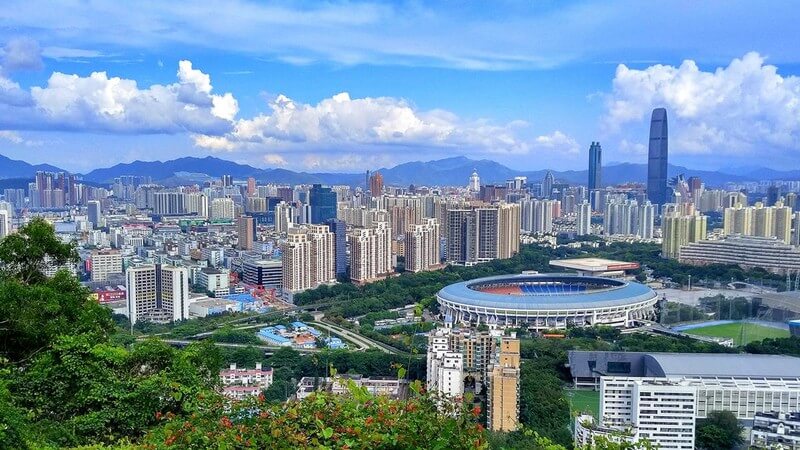
Shenzhen, abbreviated as “深”, also known as Pengcheng, is a sub-provincial city in Guangdong Province, a city specifically designated in the state plan, a megacity, and a special economic zone in China, a national economic center city, and an international city approved by the State Council. As of the end of 2019, the city has 9 districts with a total area of 1997.47 square kilometers, a built-up area of 927.96 square kilometers, and a permanent population of 13,438,800, an increase of 412,200 over the end of the previous year. Among them, the permanent resident population is 4,947,800, and the permanent non-resident population is 8,491,100.
Shenzhen is located in South China, southern Guangdong, and the east bank of the Pearl River Estuary. It borders Daya Bay and Dapeng Bay in the east, the Pearl River Estuary and Lingding Ocean in the west, and is connected to Hong Kong by the Shenzhen River in the south. It is one of the four central cities in the Guangdong-Hong Kong-Macao Greater Bay Area. 1. A national logistics hub, an international comprehensive transportation hub, an international science and technology industry innovation center, one of China’s three national financial centers, and strive to build a pilot demonstration zone of socialism with Chinese characteristics, a comprehensive national science center, and a global ocean center city. Shenzhen has a wide range of water, land, air and railway ports. It is the port city with the largest number of ports, the largest number of people entering and exiting, and the largest traffic volume in China.
The name of Shenzhen was first seen in historical records in the eighth year of Yongle in the Ming Dynasty (1410). The ruins were established in the early Qing Dynasty. Shenzhen was established in 1979. In 1980, it became China’s first special economic zone, a window for China’s reform and opening up, and an emerging immigrant city. , Created the world-renowned “Shenzhen Speed”, known as the “Silicon Valley of China”. Shenzhen occupies an important position in China’s high-tech industries, financial services, foreign trade exports, marine transportation, and creative culture. It also shoulders the important mission of experimentation and demonstration in China’s institutional innovation and opening up.
4.Guangzhou
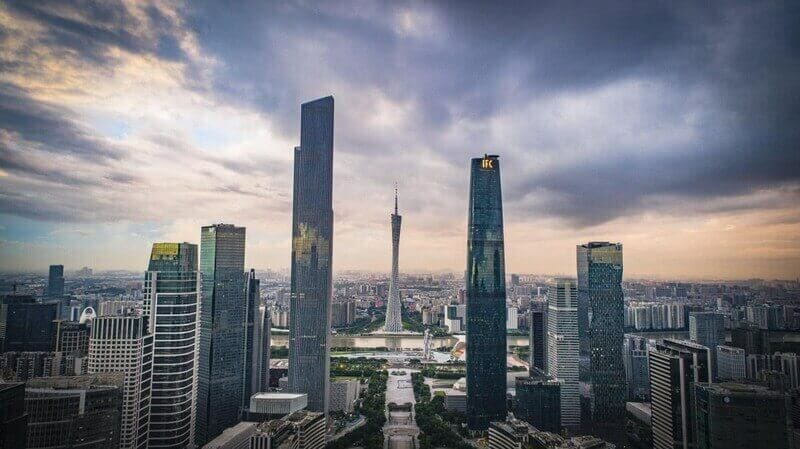
Guangzhou, referred to as “Sui”, also known as Yangcheng and Huacheng, is the capital of Guangdong Province, a sub-provincial city, a national central city, and a megacity. It is an important central city, an international trade center and a comprehensive transportation hub in China approved by the State Council. As of 2018, the city has 11 districts with a total area of 7,434 square kilometers, a built-up area of 1,249,11 square kilometers, a permanent population of 15,305,900, and an urbanization rate of 86.46%.
Guangzhou is located in southern China, the lower reaches of the Pearl River, and the South China Sea. It is the headquarters of the Southern China Theater Command, a national logistics hub, a national comprehensive gateway city, the first batch of coastal open cities, and China’s southern gateway to the world, the Guangdong-Hong Kong-Macao Greater Bay Area , The central city of the Pan-Pearl River Delta Economic Zone and the hub city of the One Belt One Road.
Guangzhou is the first batch of national historical and cultural cities and the birthplace of Cantonese culture. Since the Qin Dynasty, it has been the seat of county, state, and government governance, and the political, military, economic, cultural, and scientific and educational center of South China. Since the third century AD, it has become the main port of the Maritime Silk Road, the largest port in China during the Tang and Song Dynasties, the world-famous Oriental Port City, and the only major foreign trade port in China during the Ming and Qing Dynasties, and it is also the only major port in the world over 2,000 years old The prosperous Dagang.
5.Suzhou
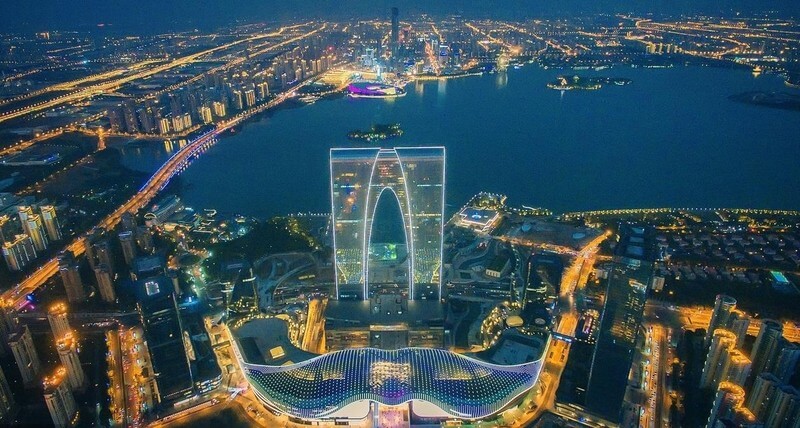
Suzhou, known as Gusu and Pingjiang in ancient times, is a prefecture-level city in Jiangsu Province, one of the important central cities in the Yangtze River Delta of China approved by the State Council, a national high-tech industrial base and a scenic tourist city. As of 2019, the city has 5 districts and 4 county-level cities under its jurisdiction, with a total area of 8,57.32 square kilometers, a built-up area of 477.63 square kilometers, a permanent population of 10.75 million, an urban population of 8.277 million, and an urbanization rate of 77 %.
Suzhou is located in East China, Southeastern Jiangsu, and the middle of the Yangtze River Delta. It is an important part of the Yangtze River City Group. It faces Shanghai in the east, Jiaxing in the south, Taihu Lake in the west, and the Yangtze River in the north. It is located at 119°55’~121°20 east longitude. ′, between 30°47′ and 32°02′ north latitude. The city’s terrain is low and flat, with plains accounting for 54.8% of the total area, about 4 meters above sea level, and hills accounting for 2.7% of the total area. Suzhou has a subtropical monsoon oceanic climate with four distinct seasons and abundant rainfall. It grows rice, wheat, rapeseed, and produces cotton, sericulture, and forest fruits. Its specialties include Biluochun tea, Yangtze saury, Taihu whitebait, and Yangcheng Lake hairy crabs.
Suzhou is one of the first national historical and cultural cities with a history of nearly 2500 years. It is an important birthplace of Wu culture and has the reputation of “paradise on earth”. The representative of Chinese private gardens-Suzhou Classical Gardens and the Suzhou Section of the Grand Canal of China are listed as World Cultural Heritage by UNESCO.
6.Hangzhou
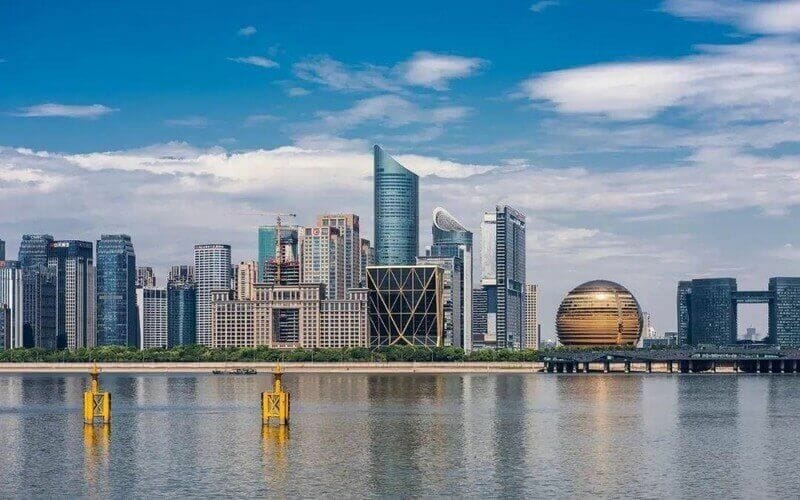
Hangzhou, abbreviated as “杭”, was called Lin’an and Qiantang in ancient times. It is the provincial capital of Zhejiang Province, a sub-provincial city, and the core city of the Hangzhou metropolitan area. It has been approved by the State Council as the provincial capital of Zhejiang Province and the provincial economic, cultural, scientific and educational center, and the Yangtze River Delta central city. one. As of 2019, the city has 10 districts, 2 counties, and 1 county-level city under its jurisdiction, with a total area of 16,853.57 square kilometers, a built-up area of 648.46 square kilometers, a permanent population of 10.36 million, and an urban population of 8.1326 million. The urbanization rate is 78.5%.
Hangzhou is located in East China, the lower reaches of the Qiantang River, the southeast coast, the north of Zhejiang, and the southern end of the Beijing-Hangzhou Grand Canal. It is a core city in the Hangzhou Bay Greater Bay Area, a central city in the Shanghai-Jiaxing-Hangzhou G60 Science and Technology Corridor, and an important international e-commerce center. There are many cultural and historical sites in Hangzhou, and there are a large number of natural and cultural relics in and around West Lake. Representatives include West Lake culture, Liangzhu culture, silk culture, tea culture, and many legends that have been handed down.
Hangzhou has a history of more than 2,200 years since the establishment of county rule in the Qin Dynasty. It was once the capital of Wuyue Kingdom and Southern Song Dynasty. Because of its beautiful scenery, it is known as “paradise on earth”. Hangzhou benefited from the convenience of the Beijing-Hangzhou Canal and trade ports, as well as its own developed silk and grain industries, and was once an important commercial distribution center in history. Later, relying on the opening of the Shanghai-Hangzhou Railway and other railway lines and Shanghai’s import and export trade, the light industry developed rapidly. Since the beginning of the new century, driven by high-tech companies such as Alibaba, the Internet economy has become a new economic growth point for Hangzhou.
7.Chongqing
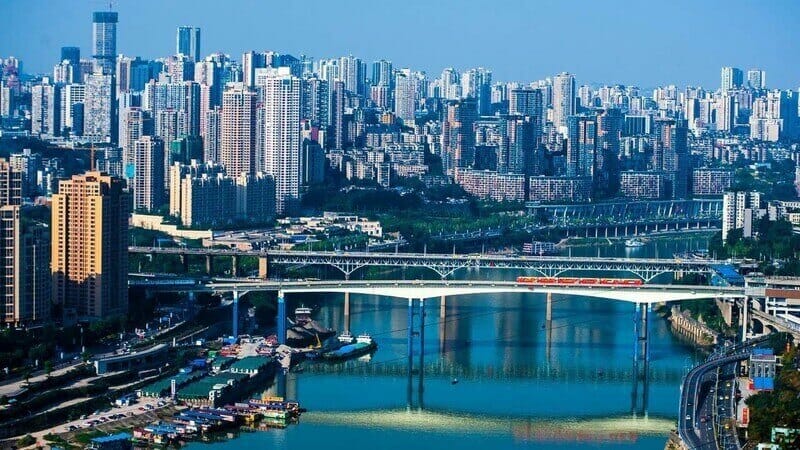
Chongqing, abbreviated as “渝”, also known as mountain city, is a provincial administrative region, municipality directly under the Central Government, a national central city, and a mega city of the People’s Republic of China. Industrial base, comprehensive transportation hub in southwestern region. With a total area of 82,400 square kilometers, it has jurisdiction over 26 districts, 8 counties, and 4 autonomous counties, with a permanent population of 31,243,200, an urban population of 20,869,900, and a permanent resident population of 1,676,500.
Chongqing is located in the southwestern inland of China. It is the economic, financial, technological innovation, shipping and trade logistics center in the upper reaches of the Yangtze River, a national logistics hub, an important strategic fulcrum for the development of the western region, and an important link between the “Belt and Road” and the Yangtze River Economic Belt As well as the inland open highlands and beautiful places with beautiful mountains and clear waters; it is not only famous for the river city, fog city, and bridge, but also famous for the mountain city. Chongqing is dominated by the Han nationality, and the minority nationalities mainly include the Tujia and Miao nationalities. There are rich tourism resources, including the Three Gorges of the Yangtze River, the World Cultural Heritage Dazu Rock Carvings, the World Natural Heritage Wulong Karst and Nanchuan Jinfo Mountain.
Chongqing is a national historical and cultural city. In 1189, Song Guangzong Zhao Dun first named King Gong and then became the emperor, calling himself “double celebration”, and Chongqing got its name from this. Chongqing is the origin place of “Hongyan Spirit” and the birthplace of Bayu culture. “Hotpot” and “Diaojiaolou” have far-reaching influence. In the 3000 years of written records, it has been the capital of the country three times, and the city has been built four times, known as “Bayu” in history; During the Anti-Japanese War, it was the capital of the Nationalist Government.
8.Tianjin
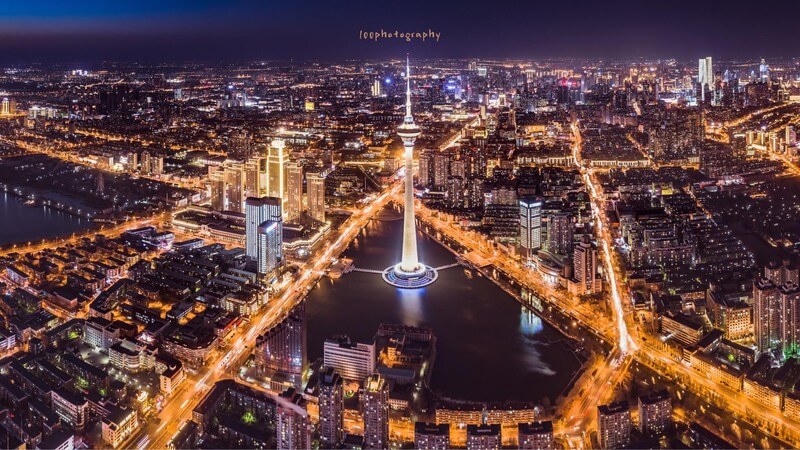
Tianjin, abbreviated as “津”, also known as Jingu and Jinmen, is a provincial-level administrative region, municipality directly under the Central Government, national central city, megacities of the People’s Republic of China, the economic center of the Bohai Rim region, the Asia Pacific Ocean Instrument Testing and Evaluation Center, and the international comprehensive transportation hub. As of 2018, the city has 16 districts with a total area of 11966.45 square kilometers. At the end of 2019, the permanent population was 15.6183 million, the urban population was 13.0382 million, and the urbanization rate was 83.48%.
Tianjin is located in northern China, the lower reaches of the Haihe River, and the Bohai Sea in the east. It is the largest port city in northern China, a national logistics hub, a national advanced manufacturing research and development base, a northern international shipping core area, a financial innovation operation demonstration area, and a pilot area for reform and opening up. The coastal open city is the main node of the China-Mongolia-Russia Economic Corridor, the strategic fulcrum of the Maritime Silk Road, the intersection of the “Belt and Road”, and the nearest eastern starting point of the Eurasian Continental Bridge. It is located in the South Canal, Ziya River and Daqing River, the five major tributaries of the Haihe River. The confluence and estuary of the Yongding River and the North Canal is known as the “Xiasao of the Nine Rivers” and “The Key Point of the River and the Sea”.
9.Chengdu
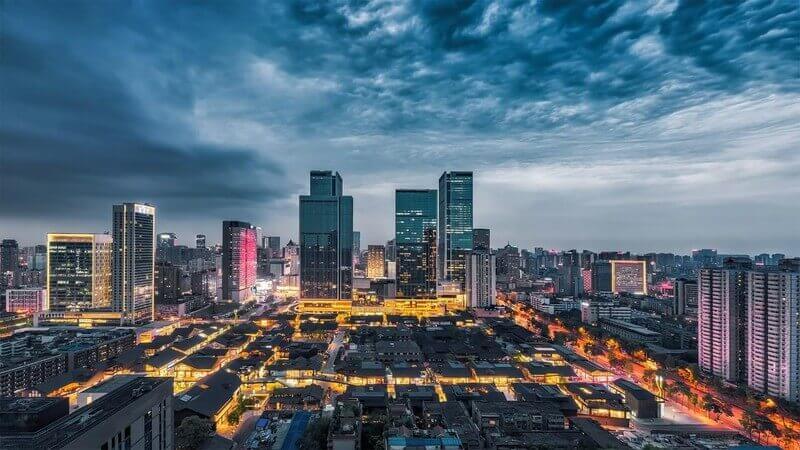
Chengdu, or “蓉” for short, also known as Rongcheng and Jincheng, is the provincial capital, sub-provincial city, megacities, and core city of the Chengdu-Chongqing dual-city economic circle. It is an important central city in western China approved by the State Council and an important country A high-tech industrial base, a commercial logistics center and a comprehensive transportation hub. As of 2019, the city has 12 municipal districts, 3 counties, and 5 county-level cities under its jurisdiction, with a total area of 14,335 square kilometers, a built-up area of 949.6 square kilometers, a permanent population of 16.581 million, and an urban population of 12.337900. The urbanization rate is 74.41%.
Chengdu is located in the southwestern region of China, the western part of the Sichuan Basin, and the hinterland of the Chengdu Plain. It has a flat terrain, vertical and horizontal river networks, rich products, and developed agriculture. It has a humid subtropical monsoon climate. It has been known as the “country of abundance” since ancient times; it is the western theater of the Chinese People’s Liberation Army The office location, as an important global electronic information industry base, has 30 national-level scientific research institutions, 67 national-level R&D platforms, 56 universities, and approximately 3.89 million talents. In 2019, 301 Fortune 500 companies settled in the world.
10.Nanjing
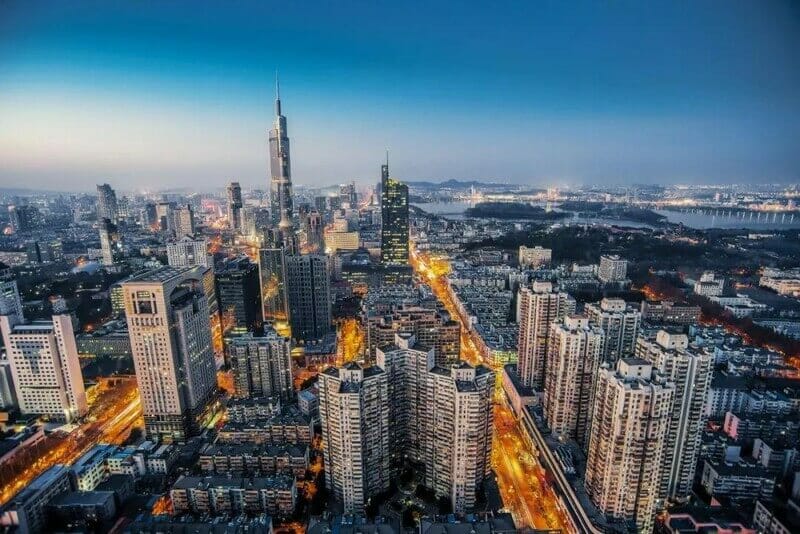
Nanjing, abbreviated as “宁”, was called Jinling and Jiankang in ancient times. It is the capital of Jiangsu Province, sub-provincial cities, megacities, and core cities in the Nanjing metropolitan area. Comprehensive transportation hub. As of 2019, the city has 11 districts with a total area of 6,587 square kilometers, a built-up area of 823 square kilometers, a permanent population of 8.5 million, an urban population of 7.072 million, and an urbanization rate of 83.2%.
Nanjing is located in the east of China, the lower reaches of the Yangtze River, near the river and the sea. It is the headquarters of the Eastern China Theater Command. The geographical coordinates are 31°14″ to 32°37″ north latitude and 118°22″ to 119°14″ east longitude. The Yangtze River Delta is an important gateway city for the development of the central and western regions, and it is also an important node city where the eastern coastal economic belt and the Yangtze River Economic Belt strategically converge.
Nanjing belongs to the Yang hilly area of Ningzhen Town. It is dominated by low mountains and gentle hills. It has a humid northern subtropical climate. The water area is more than 11%. It is the first batch of national historical and cultural cities and an important birthplace of Chinese civilization. It has long been a political, Economic and cultural center. There were ancient human activities in Nanjing as early as 1 to 1.2 million years ago, and Nanjing ape-mans lived in Tangshan 350,000 to 600,000 years ago. They have a history of more than 7,000 years of civilization, a history of nearly 2,600 years of construction, and a history of nearly 500 years of capital.